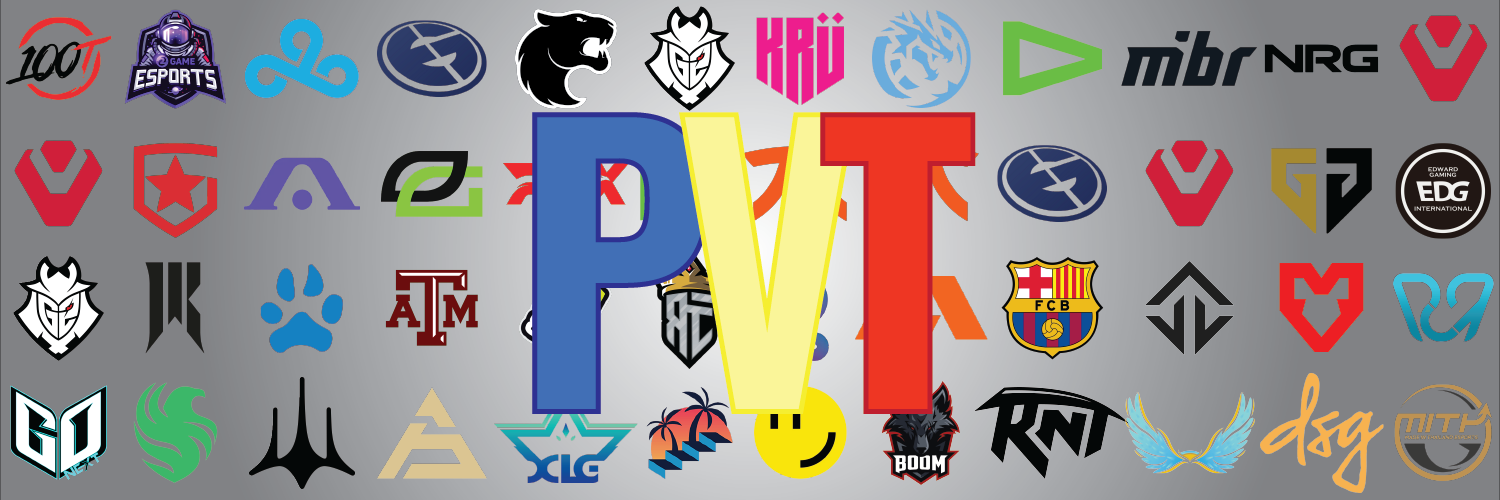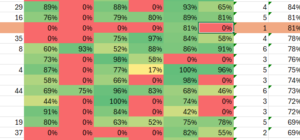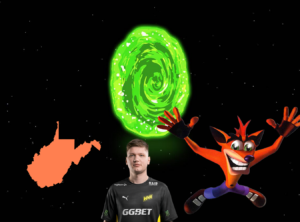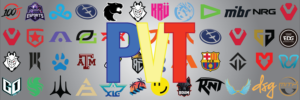
Despite Riot Games’ attempts at creating one simple system, pro Valorant is as intimidating as ever to get into. When I first started watching I had the luxury of being one of many CS:GO refugees allowing me to already be familiar with many of the pro players even when the game was still in beta. As time passed homegrown Valorant talent have started to replace established players from older games, but that hasn’t made it any easier to start watching as someone who has played but never watched Valorant before.
I am going to describe the differences between the leagues you can watch, how to watch them, as well as how to get involved with the community and make the viewing experience more fun, to the point where you get pro Valorant withdrawals like me. I will be writing this post from the perspective of an American fan, this information will be particularly pertinent when discussing social channels as other countries may have discussion boards I am less familiar with.
The Leagues
There are four levels of circuits that receive official support directly from Riot Games, Valorant’s developer.
The highest level of play is the Valorant Champions Tour (VCT.) This level, sometimes referred to as Tier-1, contains the highest level of gameplay to be found anywhere in the world. If someone has a favorite player it is very likely this is the league they compete in. There are four different VCT regions, the Americas, EMEA (Europe, Middle-east, and Africa,) Pacific, and China.
The best teams from each league meet three times a year at an international tournament, called a Master’s or Champion’s event. Winning one of these events is the ideal goal for any Valorant team, the equivalent of a Major in Counter-strike. Each league has ten partner teams, handpicked by Riot for stability, with two extra slots for third party teams to claim through qualification, leaving twelve spots in total.
Just below VCT, there are various regional leagues with teams competing for those extra third party slots in the main league. These regional leagues are called Valorant Challengers Leagues (sometimes unofficially called VCL.) Each region (Americas, EMEA, APAC, China) conducts an Ascension tournament at the end of the year to decide who gets the bonus spot each year.
These tournaments usually require a team to finish in one of the top spots in their sub-region’s league to qualify for, where they play top teams from other sub-regions. The end of these tournaments would usually mark the start of a long offseason in Tier-2, but this year many Challengers leagues are offering a third split for this season. Luckily if you are reading this right after I post this and want to stay up until 2:00 am tomorrow or Saturday you can watch the thrilling conclusion to the 2024 Pacific Ascension.
The next system to talk about is Game Changers. This is the league made by Riot for women and other gamers who don’t identify as cis. This league lacks the complicated ascension system and simply allows qualifiers and regional leagues to decide who is best. It also includes a final international tournament every year taking all the best teams from every region, akin to the Champion’s events from VCT.
You may notice that many VCT (and some VCL) teams have sponsored Game Changers lineups, as is encouraged by Riot to drive investment into the scene. The teams this year are competing for a chance to win the GC Championship 2024: Berlin, an event you definitely wont want to miss, so mark your calendars for November 8th. If you want to get into the action early, you can start watching the regional leagues right now, as some have already started.
The final system to mention is College Valorant (CVAL). This league is pretty self explanatory, it’s the league for North American college teams to compete against each other. This is the league people likely know the least about, but I strongly believe it’s worth watching at least the final tournament to see some potentially upcoming talent. The reason CVAL exists isn’t really to foster talent for pro however, it’s much more focused on building it’s own successful scene for students to compete in.
Riot made some changes to the formatting this year, shortening the season to the spring semester only, and scaling the prizes to be more focused on national competition rather than regional. This will make the 2025 CVAL Championship the best one yet. You might also notice college teams competing at the Challengers level, Winthrop in split 1 of 2024 and Blinn for all of 2024 going into split 3. Even though the teams are associated with the school, when they compete in non-CVAL leagues like VCL they are allowed to use free agent players that don’t attend their school to compete.
The Community
The most fun I’ve had with pro Valorant has never come from analyzing the pro matches alone in my room, sports of any kind are best when they bring people together. Whether it’s getting flamed online for being overly-optimistic about America’s chances against the international competition, or turning Filipino Challengers into a drinking game with my buddies at 2am, there is a very real social aspect to professional Valorant. It can be a bit intimidating to get involved with this community especially if you feel nervous that people will judge your knowledge. While the anonymity of the internet can go to some people’s heads, I have found the Valorant community very welcoming and accepting of questions and newcomers.
The game is also so vast that not a single member of the community knows everything, it’s very likely that you will see something unique, be it a cutting edge strategy, an underrated tier 2 player showing their full potential, or an outrageous shot that no one is talking about. Being able to share those moments somewhere is an extremely valuable aspect to keep engagement up.
I am going to link some of my favorite spots for discussion and information pertaining to Valorant.
The best two informational websites are VLR.gg and Liquipedia. I have found that VLR is best used for keeping track of current and upcoming tournaments and matches. It provides a match page for every match with live stats from both teams and links to current livestreams. VLR also provides a place for discussion but the comments on there tend to lean more controversial and even a bit toxic in my experience.
Liquipedia specializes in historical and more specific information, if I wanted to find out who played for Cloud9 in 2022 or who their current igl (in game leader) was, I would look to Liquipedia. It is editable by anyone like most online encyclopedias, however there is an active community to ensure timely and properly sourced information.
The primary, and in my opinion best place to discuss competitive Valorant is r/ValorantCompetitive on Reddit. Despite being based on Reddit I have found this community to be the most active and most productive community to discuss Valorant esports. Any important match will have a post-match thread for discussion of the match, and it will be one of the first places I receive most news from.
I would highly recommend selecting your favorite team’s flair if you have one, and starting to explore the subreddit. The only place that gets quicker information than Reddit would be Twitter. I don’t know if Twitter has the best format for productive discussion, but it is where you will find every single Valorant personalities account posting either a 24/7 stream of consciousness or simply the occasional “GG’s 1-2 we have to do better next time.” Either way Twitter is the closest we get to a window directly into the pro scene, Twitter is where news will break first, and oftentimes drama can start out of thin air based on a few Tweets. While I don’t often interact on there, Twitter is a great place to get updates from your favorite Esports personalities.
I also wanted to recommend a few co-streamers. If you don’t know a co-streamer is a member of the community, usually an ex-pro or coach, who will livestream a game as it’s happening while also giving their own input. While the main stream is best for clarity, it is often more exciting and engaging when you have a personality you relate with on screen. The first co-streamer I am going to recommend is by far the most popular. Former CS:GO pro and current Valorant streamer Tarik regularly pulls in more viewers than the main stream.
He does this by having a great relatable personality that isn’t off putting to newcomers potentially even catering to them, and by inviting some great guests on his co-streams as if it’s a late night show. He will have the owner of an organization that is in a life or death match in the call with him while watching, or will be talking to the 5th man of one of the teams that couldn’t make the tournament for one reason or another. Basically if there is someone with a large vested interest in the game that is going to join a co-stream, they will join Tarik’s.
If you are looking for a more serious analytical view of the game I would recommend either ex-coach Sliggy, or ex-coach Sean Gares. Both of these streamers focus more on the tactical aspects of the game, and pull in smaller viewers allowing for more viewer interaction. If you have a question about what a team is doing, you can pull up the SGares costream and ask him directly and you will receive a more insightful answer than anyone in twitch chat would give you.
I also wanted to recommend one Youtube channel. There are too many to do a comprehensive deep dive, but pretty much the whole American Valorant Esports scene is at least aware of the Platchat Youtube channel, a (usually) weekly podcast featuring a group of four respected analysts or personalities giving commentary on everything in the Valorant world. Simply watching this podcast every time it comes out would make you more informed than the average fan, although the average fan likely got all of their opinions from a Platchat video anyways.
Finally if you have a team you really love, I would suggest searching out and joining their Discord server. They likely have some team based discussion, watch parties, and maybe opportunities to chat with some members of the org.
If that was too much for anyone, remember this is supposed to be fun not homework, there’s no reason to force yourself to engage in all of these areas if you don’t want to. At the very least I would suggest finding a favorite team and trying to watch most of their games, either live or after the fact. I hope this guide helps you further engage with this great community.





Hi, this is a comment.
To get started with moderating, editing, and deleting comments, please visit the Comments screen in the dashboard.
Commenter avatars come from Gravatar.